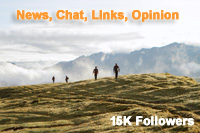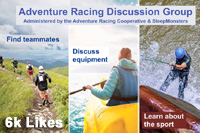Patagonian Expedition Race
The Race Route is Revealed
Rob Howard / 14.02.2016


Tonight at the Hotel Rey Don Felipe Race Director Stepjan Pavicic introduced the route of the 2016 Patagonian Expedition Race to the team captains and navigators.
He began by saying; “I know this is a very important moment, when the race really starts and once you get this information you can plan your race. We’ll start with the maps!”
There was a real hubbub of excited chatter as the maps were given out and unwrapped and the overall route map was studied intently first of all. The first impression of the maps is the lack of detail, compared to any others on adventure races – here they deal only with the bigger picture! Secondly it was clear that the end of the course loops around the Fjord Ultima Esperanza – the sound of Last Hope!
As the teams already knew the start will be at Faro Dungenes, the lighthouse at the entrance of the Magellan Strait, across the water from Tierra Del Fuego. Knowing this many teams had assumed they would begin in their kayaks – but that isn’t going to happen. The first stage will be a 34km trek to Estancia Los Pozos all along the coast and Pavicic warned that it’s a very exposed transition and that teams had to stay on the coast.
The 272km bike ride on stage two uses secondary roads and it’s an area where a lot of oil companies work, which has created many un-mapped side roads, so the route will be flagged. It’s an area that is open and barren and according to Pavicic; “there is not a single tree – it is very dry too because of the wind.” (There may be some water provided to the racers along this section.)
On this ride at CP5 at Villa Tehuelches there is food and shelter in a village hall/gymnasium and here every piece of equipment the teams carry will be checked.
CP6 is called Puesto Correa (“it’s only one house”) and the second 76km trek begins here leading into a very open forest and then ‘turba’. At this point a few teams asked ... “what?” Pavicic just replied ‘peat bog’ but the teams will soon learn what turba is and come to know it very, very well. It’s a feature of this race as much as the dense forest and the majestic fjords and mountains. Pavicic continued, “There is a part of the route before Paso Humbruna which is very wet Turba ...”
Once across the pass teams arrive at Rio Primero to collect the bikes again and ride 110km north via Puerto Natales, one of the bigger towns of the region which is a major tourist centre. Feeling generous Pavicic said, “You can stop and buy food here if it’s daytime ... but not stop to sleep in a hotel or anything like that!”
The ride finishes at Estancia Perales, which is a tourist cruise stop and from here the first kayak is just 6km across Seno Ultima Esperanza. “It’s short but can be really bad,” Pavicic said. “ In the past we have had to cancel kayaking in bad weather but with a shorter stage we have some more leeway to keep it open” He added, “This is a dark zone so you can’t be on the water between 10pm to 6am.”
Once across the Sound the third trek (56km) takes teams higher and into mountain areas where very few have ever been before. Pavicic commented that the bush could be dense here if teams didn’t find a good line and the question was asked 3 times over ... “Is there no trail? No path?” The reply was a dismissive, “No” because treks on this race never follow trails, they are through virgin wilderness where there is no sign of man’s influence – no buildings, tracks, bridges, fences – nothing at all.
On this section the Google mapping showed small snowfields and many cliffs and teams were told, “Even now in the middle of summer it can snow in bad weather so be prepared. On difficult ground it might be best to sleep and not move in the night.”
The room was quieter now as teams realised this stage will be a step up in difficulty and remoteness. Photos showed some amazing views and Pavicic said he’d seen 30 Condors here at one time, more than he’d ever seen anywhere else.
At the end of the trek is CP12 which has been named ‘Last Hope’ and the next stage is a 17km kayak which passes along a shore close to glacier outfalls. Teams were advised, “Don’t spend long there in case of big ice blocks coming off the glacier!”
CP 13 is at Hosteria Balmaceda and the final stage takes teams 41km up and over ‘Byron Pass’ which is glacier covered. Pavicic explained, “If we have good luck there will be some snow and crampons won’t be needed, but if it’s icy you will need them. The route over the glacier will be marked with reflective flags so you can cross at night.
“On the way down you might find a path which we opened for our Ultra Fiord trail race last April and you may see blue flags marking the route. Then there is some turba and forest to reach the finish back at Estancia Perales.”
He emphasised the importance of finishing he first long bike ride, whatever the weather conditions. “This section may spread out the teams,” he said, “especially if the weather is difficult. Once in 2006 we tried part of the same route and had to cut it because it was impossible to even ride downhill. This time we can wait days if we need to and adjust things after that, so you need to finish this ride even in brutal bad weather.”
He explained that the cut-off times given to teams up to Puerto Natales are only for reference, because progress will depend on the wind they are riding into. However the cut-off at Puerto Natales (12pm on the 21st) is mandatory so any teams missing that will be out of the race.
As teams digested all this information and came to terms with what lay ahead he said the start on Tuesday would be put back to 8am due to changing tidal condition affecting a river crossing and that teams would leave by bus for the 300km journey to get there at 1am in the morning.
He finished by saying, “Safety is in your own hands. You must make your own decisions about the route to take, how to cross rivers and when to stop, and only you can know your own strengths and how much sleep you have had.”







 SleepMonsters
SleepMonsters



